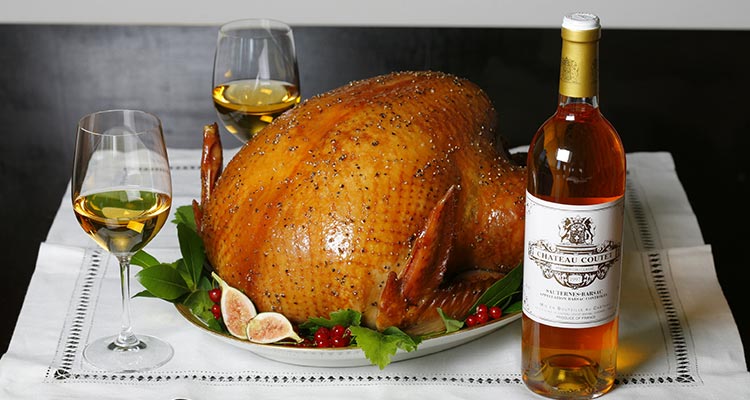This is going to be a challenging Thanksgiving. Very few families will not be politically divided. Somehow we must come together and eat turkey without shooting at each other.
Wine can help. It is a great unifier. Unlike beer and whiskey, wine consumption in the U.S. is split nearly 50-50 between Democrats and Republicans. It’s one of the few things we can all agree on.
Except when we don’t.
I’m not going to offer a rundown on the types of wines Democrats and Republicans like. They are different, and I could do that for laughs. But I have a loftier goal. I want to speak to you, my fellow enophile, about a topic that I know you have faced:
How to nudge your family members into drinking slightly better wine.
Most of us have had these experiences. You bring some expensive or hard-to-find wine to dinner with the extended family, but Aunt Myrtle doesn’t know why she can’t drink the same wine she has enjoyed every holiday for the last 45 years. Your cousin fills her glass to the brim with your prized Pinot Noir, takes a long pull, then says, “That’s OK, but I’ve had better.” Your grandfather thanks you for bringing a bottle of bubbly but says, “Champagne gives me a headache.” Et cetera.
Don’t give up. You can’t get Aunt Myrtle to switch from Manischewitz to cloudy natural-wine Grenache. But you CAN make choices that will improve the drinking lives of your friends and family.
First, don’t bring any wine with which you are too emotionally involved. For any wine you are thinking about, ask yourself how you would react if one of your uncles hated it. If you start to flare up at the thought, bring something else.
Bring more than one bottle, and make them very different. Even your orneriest relative should try to find something to like, given multiple choices.
We all know some wines are easier for novices to appreciate than others. If you want to spring a cool-climate Syrah on them, also offer the option of a crisp Sauvignon Blanc. Inoffensive is not a bad word in this context.
Psychological studies consistently show that people enjoy wine more when they know it’s expensive, and conversely they like it less when they know it’s cheap. I have used Thanksgiving to demonstrate this phenomenon. (Friend: “That wine is too tannic. I don’t like it.” Me: “It cost $80.” Friend: “Really? Let me try it again.”) This is fun but doesn’t advance this year’s goal of family unity around better wine. So only share the price information if the wine costs more than $25. Your aunts might complain that you spent too much, but you can tell them, “I know how much money and effort went into this delicious meal. Really I spent too little. My family is worth it.”
Along those lines, before people try the wines, consider yourself as a tasting-room staffer, telling people only the information that you know will make them like the wine more; i.e., “This is from a vineyard in Sonoma County that was damaged by the fires last month. We don’t know when we can have it again but buying it now will help them recover.” If the winemaker is from your home state, say it. Paint the wine in the brightest terms possible.
Let’s talk about natural wine. Part of your agenda might be to reach your millennial cousins with a wink and a conspiratorial note about how the rest of the family doesn’t get it. This isn’t a bad goal, but be inclusive with your bag of wines. Bring something that’s not a natural wine and let people compare. You might get more converts than you think. You also might get a lively conversation going about the nature of wine itself; natural wine tends to do that. You can talk about history and technology and how wine was made in the past. I want to caution you about my first note: don’t do this unless you are perfectly comfortable with your older relatives utterly rejecting your natural wines, which they might.

Bring a sparkling wine — a good one, but not an unusual one — and just open it right away and start giving out glasses. Solid domestic bubblies like Gruet or Gloria Ferrer, especially a brut rosé, are good for this. It starts the party on a festive note. Nobody wants to say no to a glass of sparkling wine. If somebody asks what you’re celebrating, “We’re celebrating that we are all here together and can share this meal.”
Do not worry about wine pairing. Most of your relatives won’t. Yes, aromatic whites and sparkling wines and rosés are better with most Thanksgiving plates, but if people want to drink red wine, they will.
Wine comes in a 750 ml bottle because it is meant to be shared. Imagine yourself drinking a glass of wine with that crotchety relative whose politics you hate. What wine might it be? How can you make that wine a little bit better than what he normally drinks? If he likes big Cabs, can you get a super Tuscan? Or maybe a brambly Zinfandel?
If you can nudge people a little bit with wine, get them to drink and enjoy something a bit better than they usually do, it’s a successful conversation. The implications for other conversations you might have at this year’s Thanksgiving meal should be obvious.

